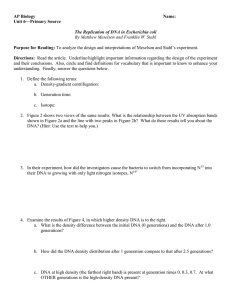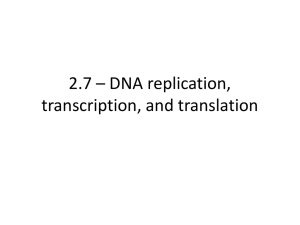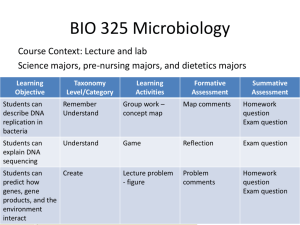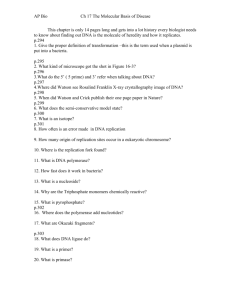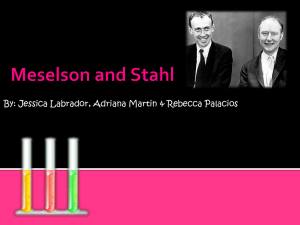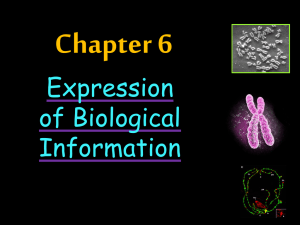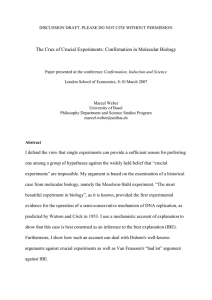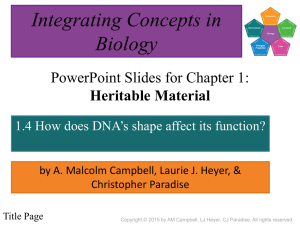Matthew Meselson and Franklin Stahl published an experiment in
advertisement
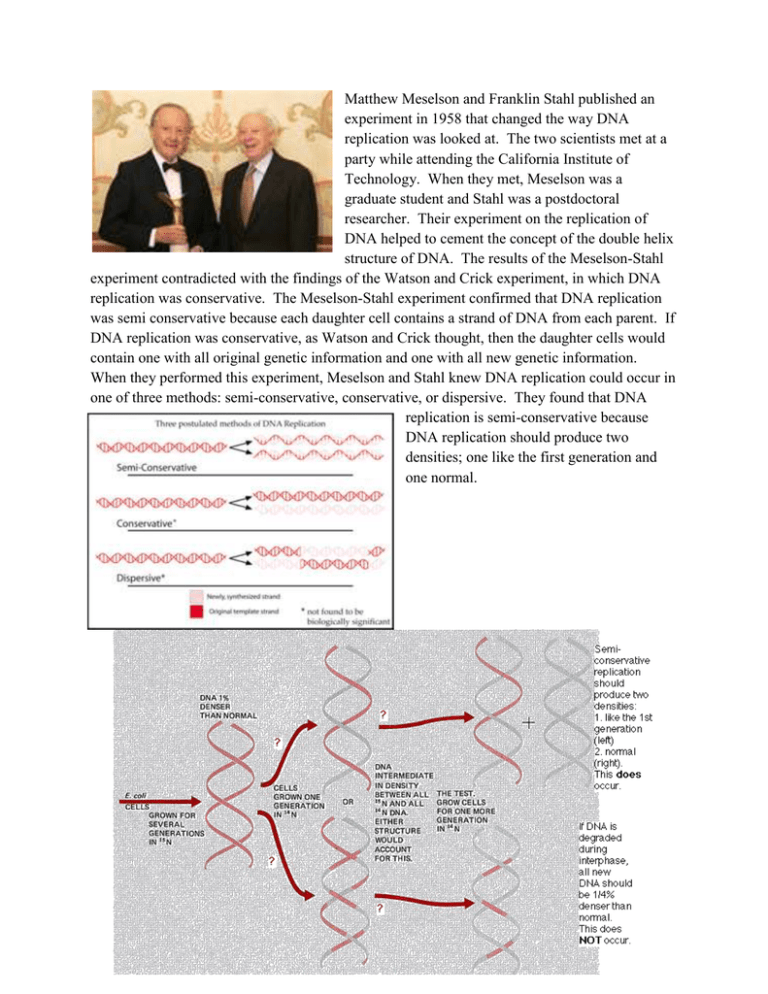
Matthew Meselson and Franklin Stahl published an experiment in 1958 that changed the way DNA replication was looked at. The two scientists met at a party while attending the California Institute of Technology. When they met, Meselson was a graduate student and Stahl was a postdoctoral researcher. Their experiment on the replication of DNA helped to cement the concept of the double helix structure of DNA. The results of the Meselson-Stahl experiment contradicted with the findings of the Watson and Crick experiment, in which DNA replication was conservative. The Meselson-Stahl experiment confirmed that DNA replication was semi conservative because each daughter cell contains a strand of DNA from each parent. If DNA replication was conservative, as Watson and Crick thought, then the daughter cells would contain one with all original genetic information and one with all new genetic information. When they performed this experiment, Meselson and Stahl knew DNA replication could occur in one of three methods: semi-conservative, conservative, or dispersive. They found that DNA replication is semi-conservative because DNA replication should produce two densities; one like the first generation and one normal. http://www.bing.com/images/search?q=matthew+meselson+and+franklin+stahl&qpvt=matthew +meselson+and+franklin+stahl&FORM=Z7FD#focal=50823134d71029ac9091895940bbe2d9& furl=http%3A%2F%2Fwaves.mbl.edu%2Fnews%2Fpress_releases%2Fimages%2Fmeselson.jpg


